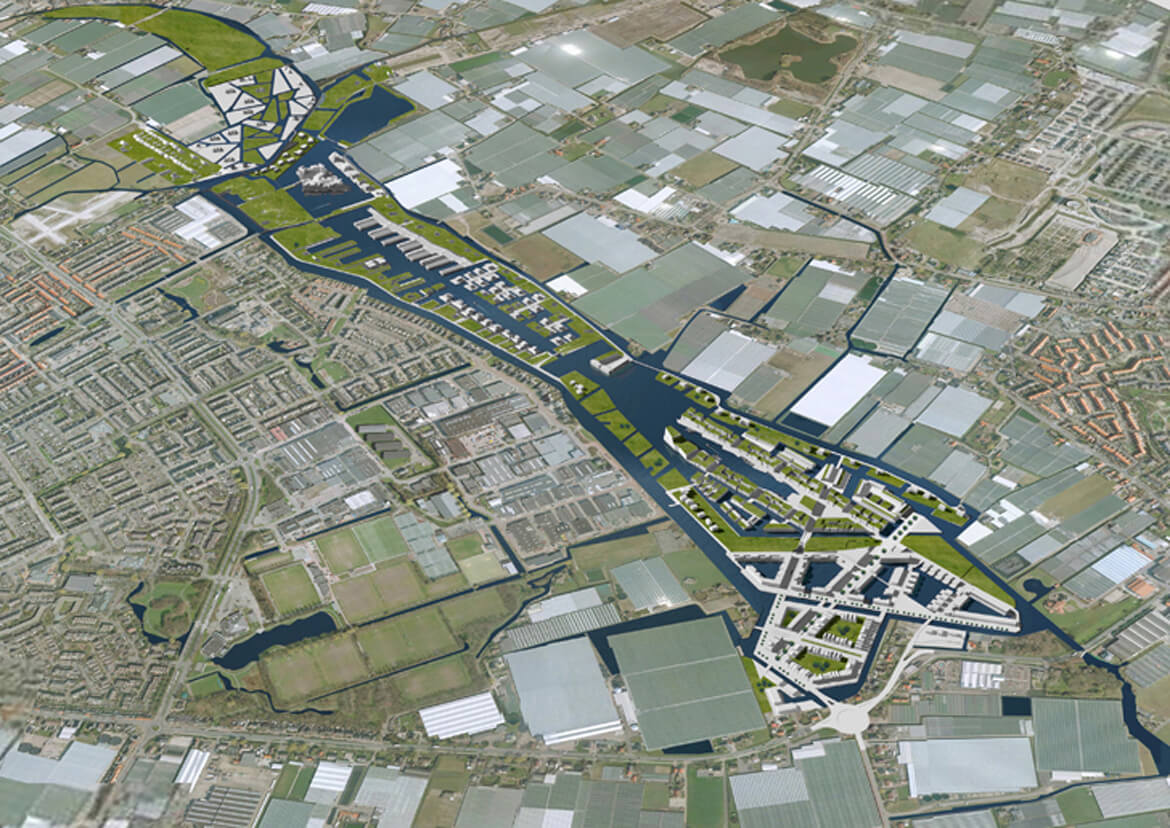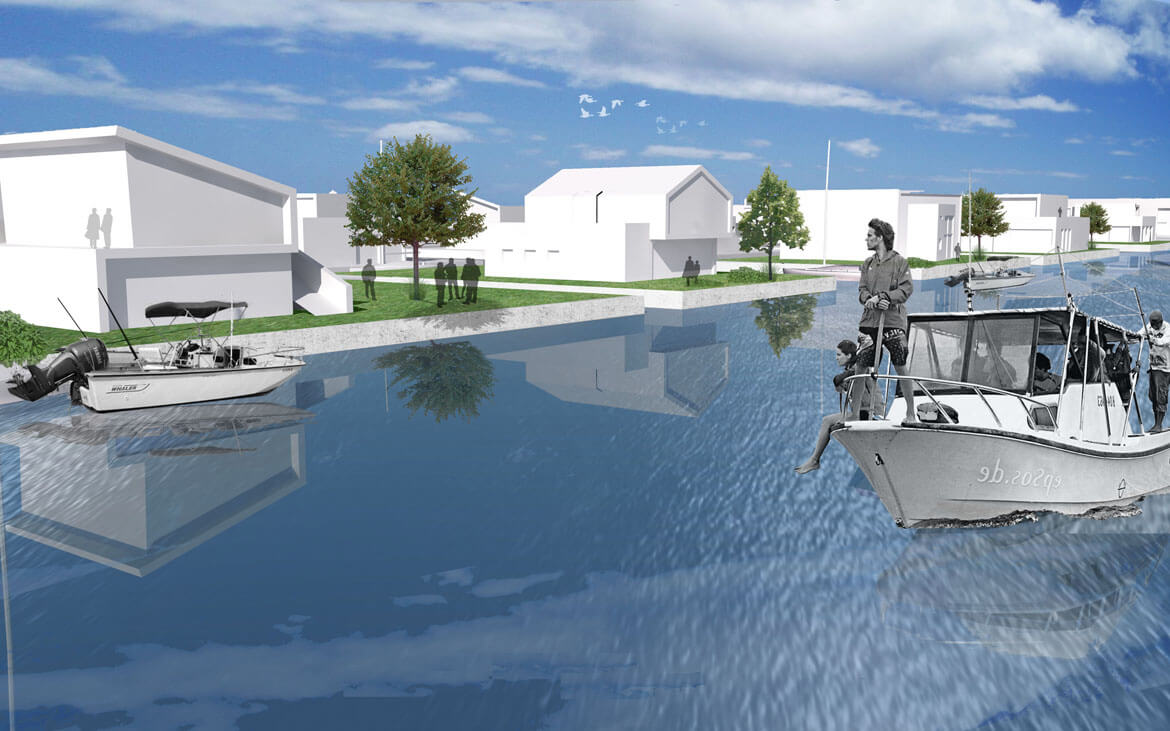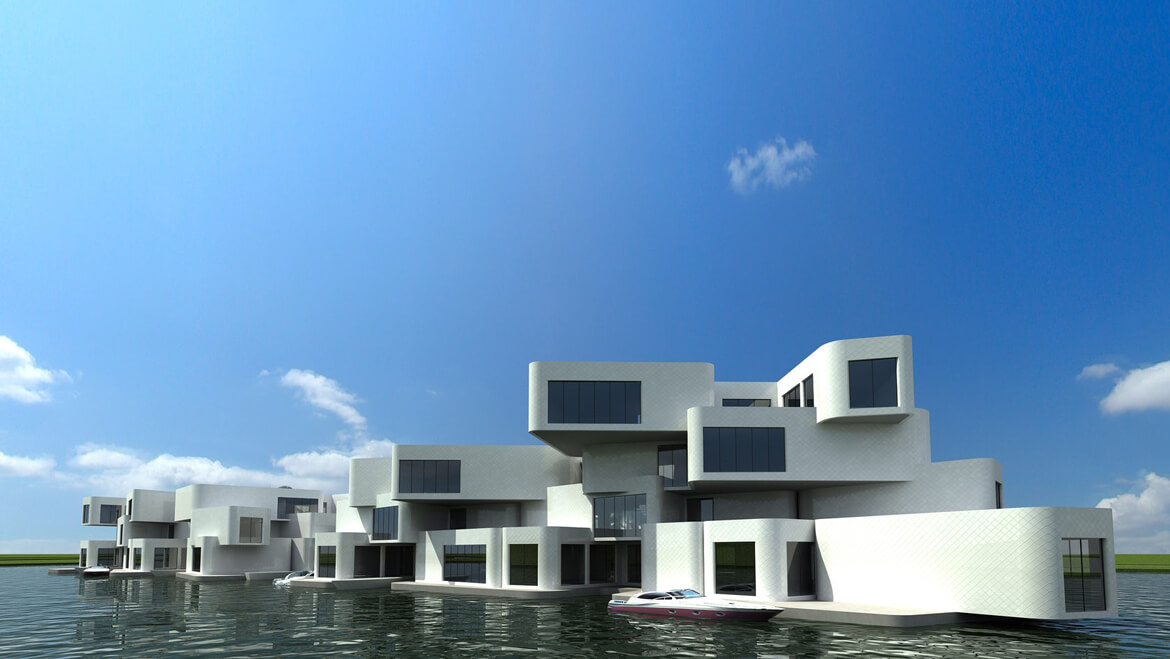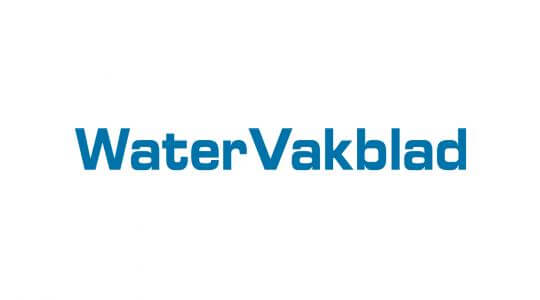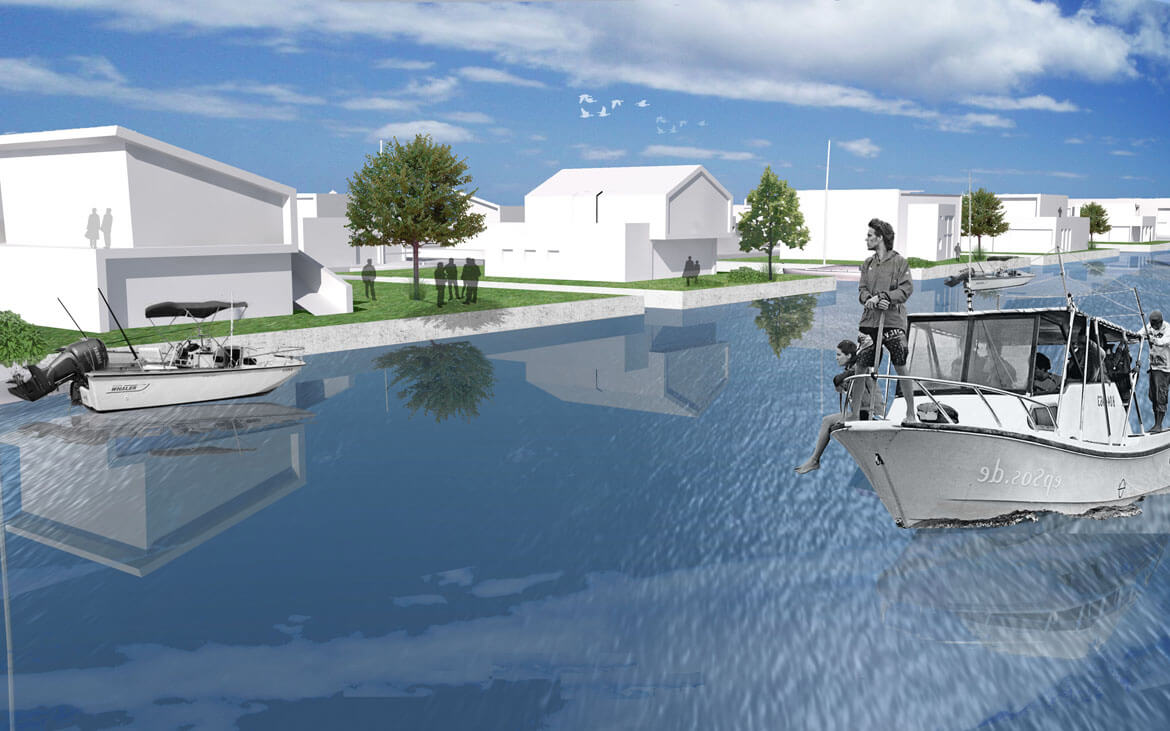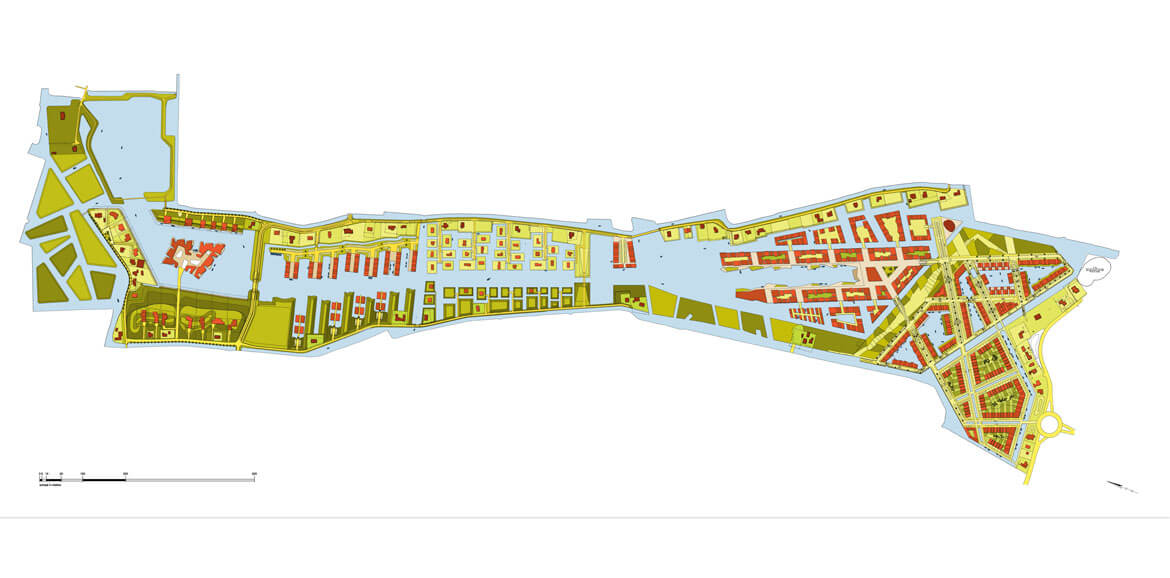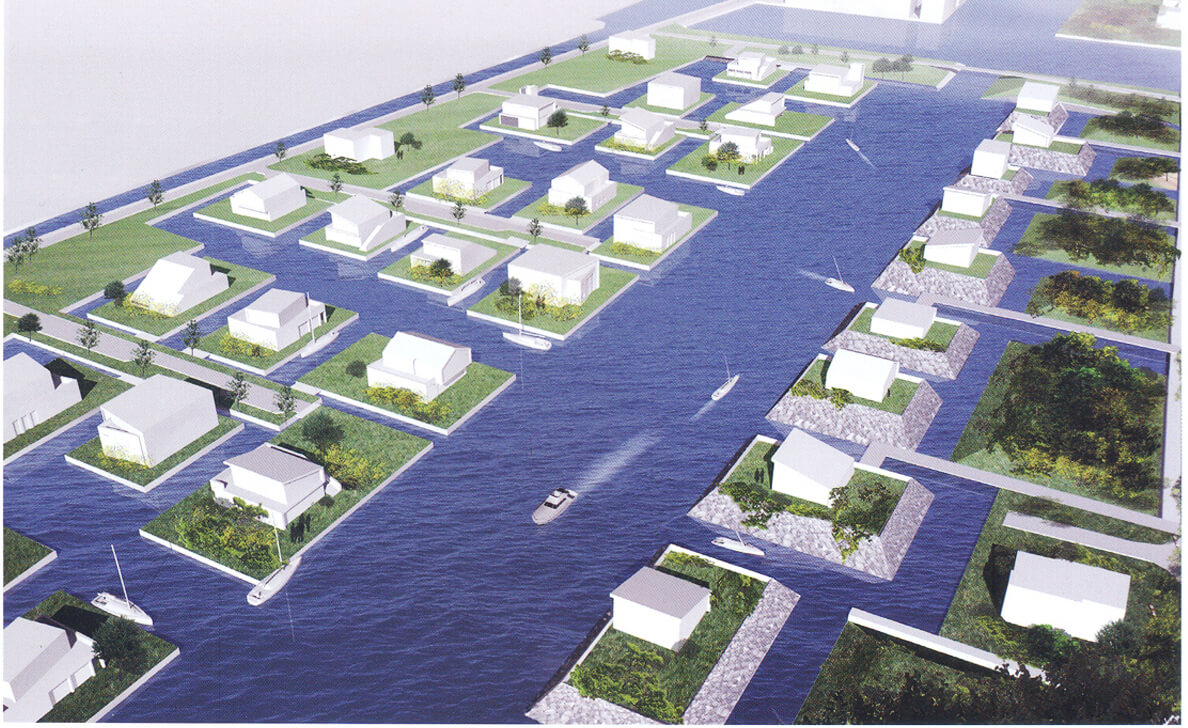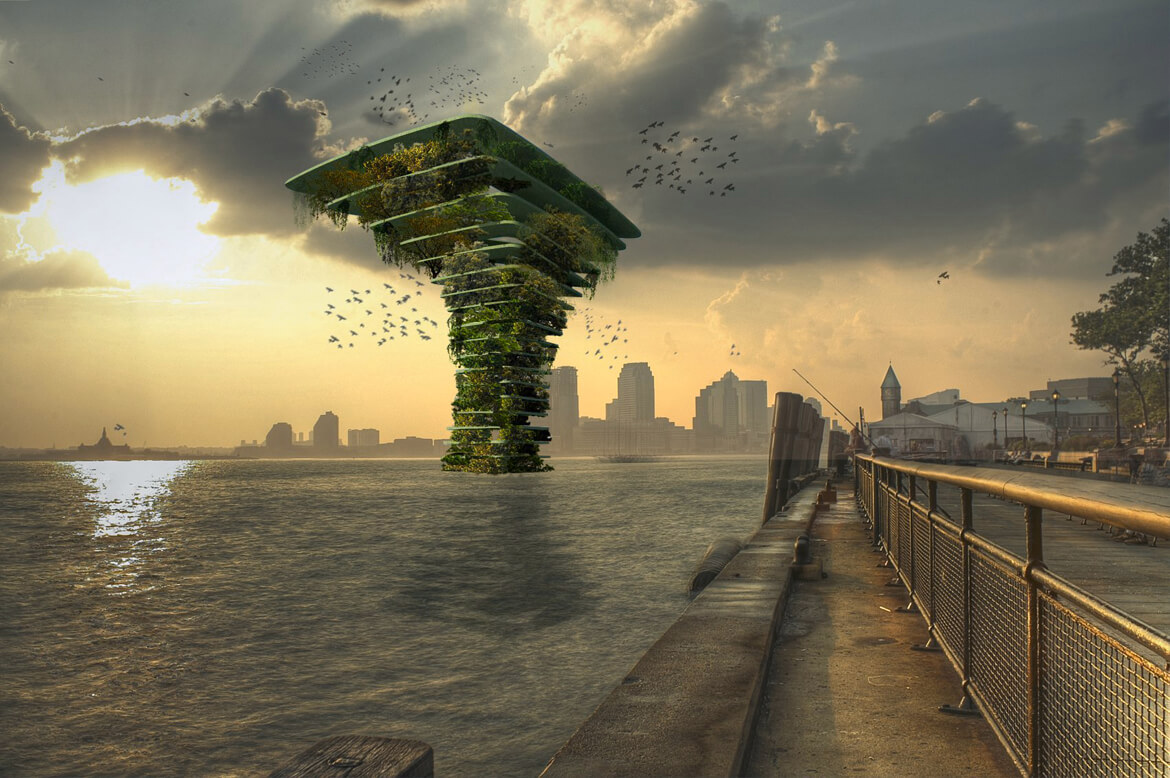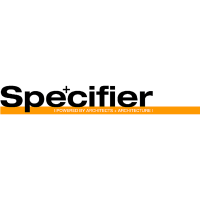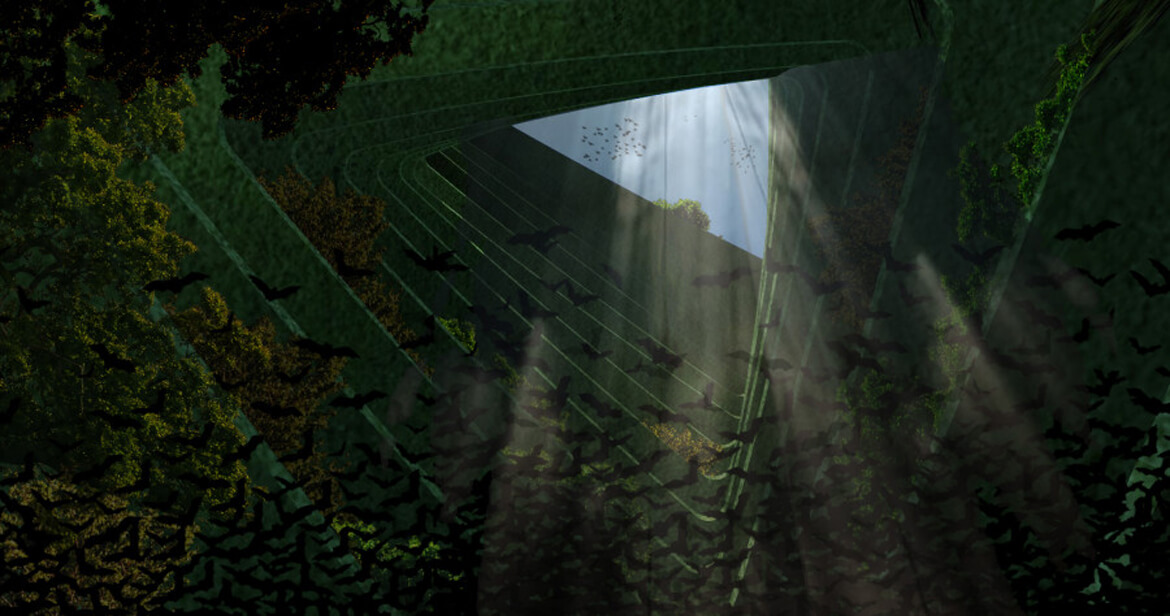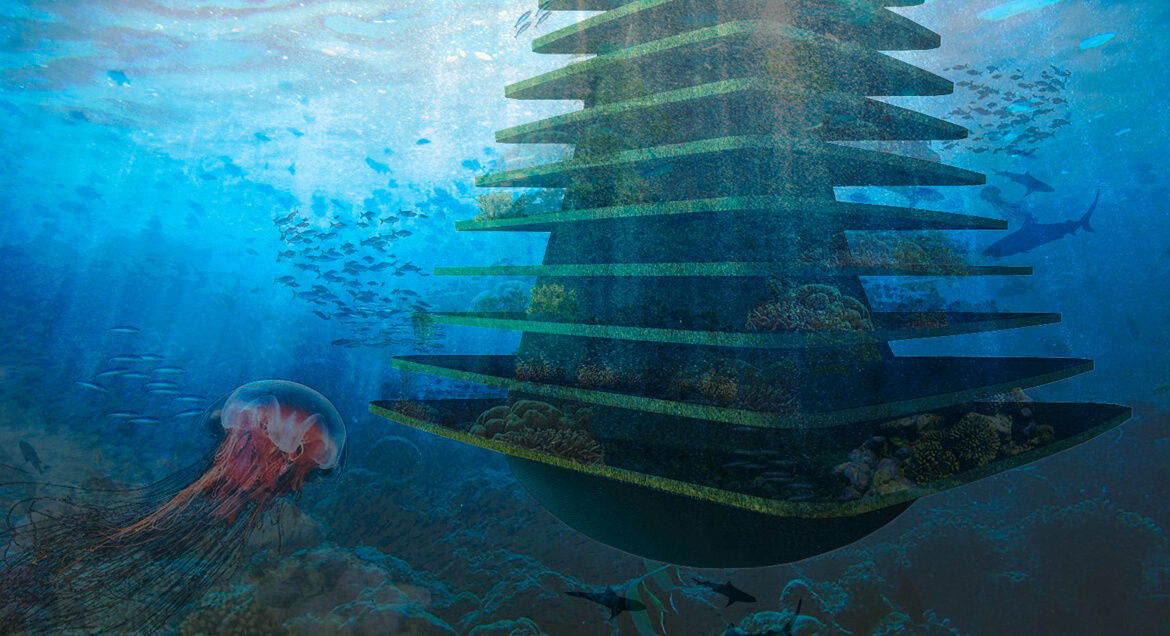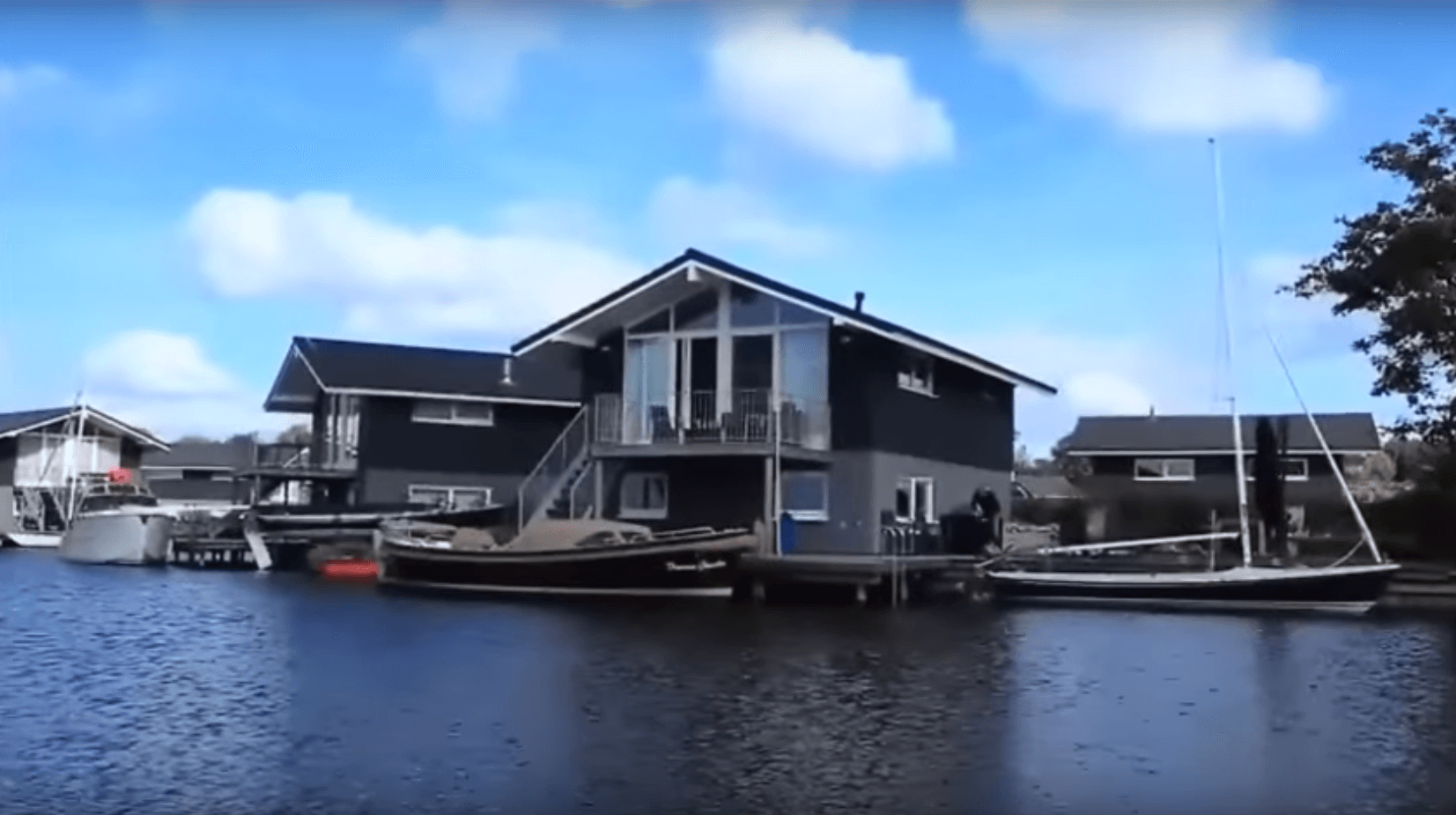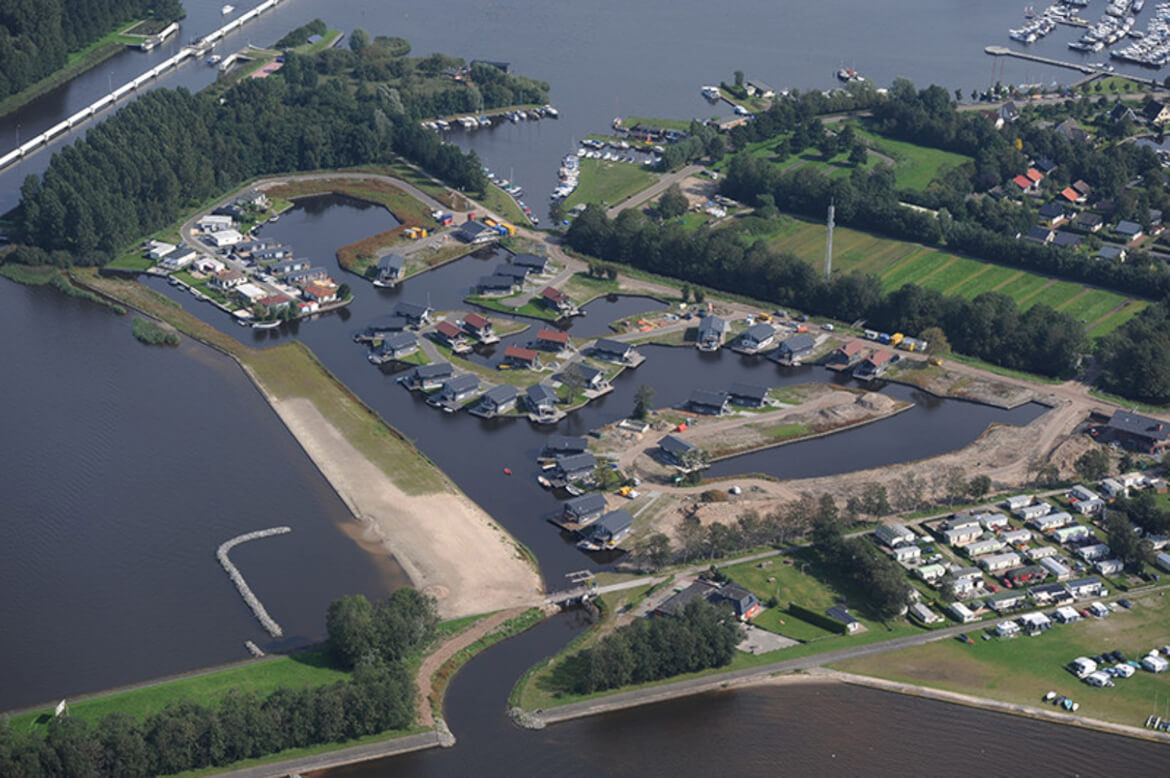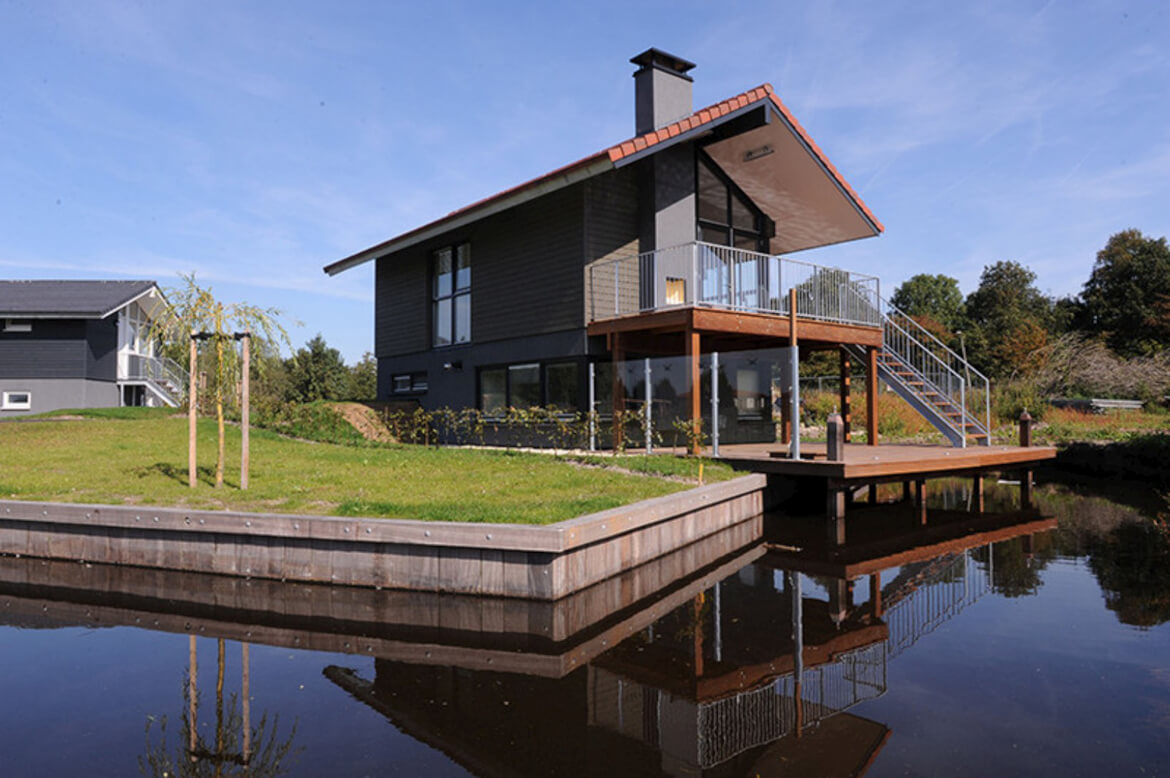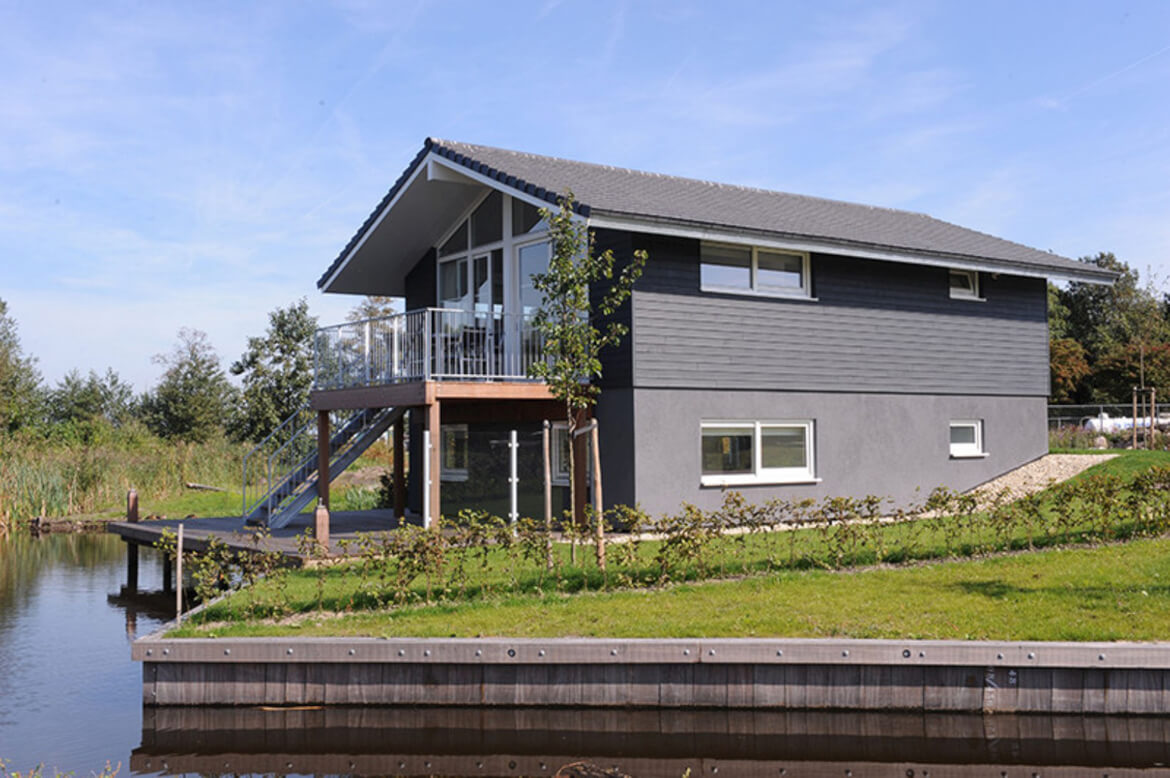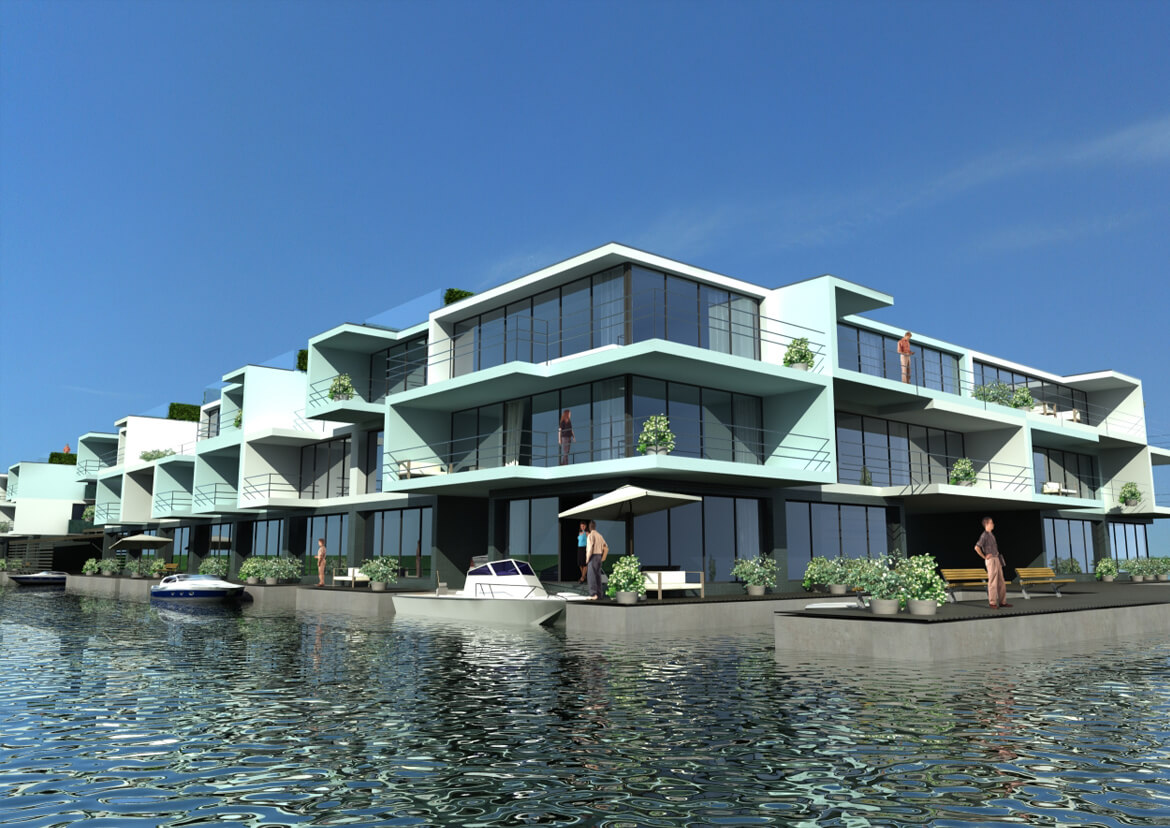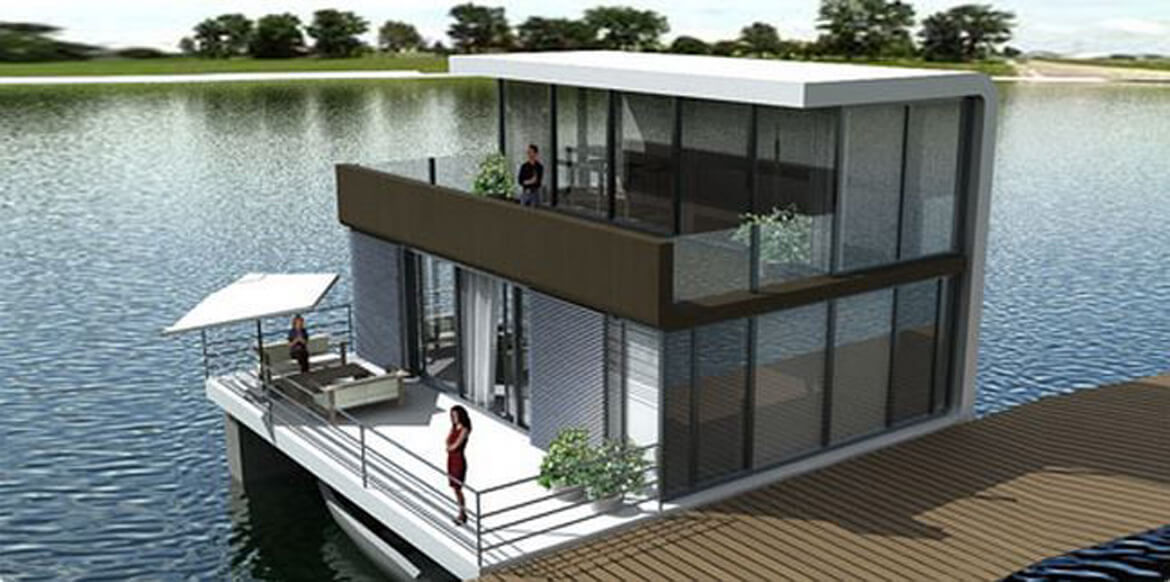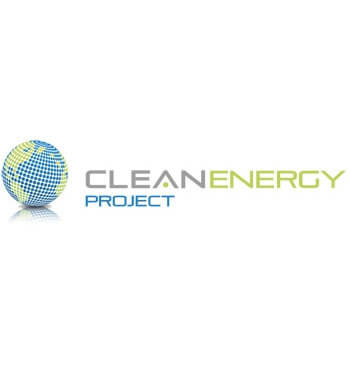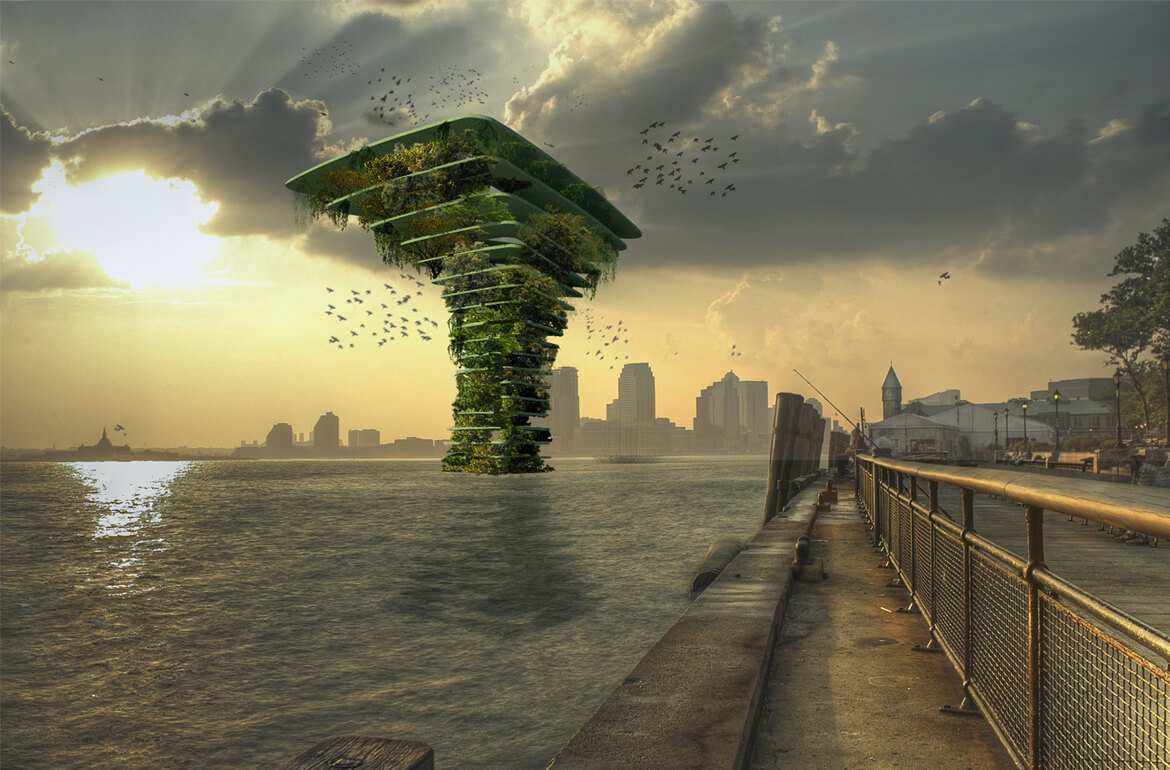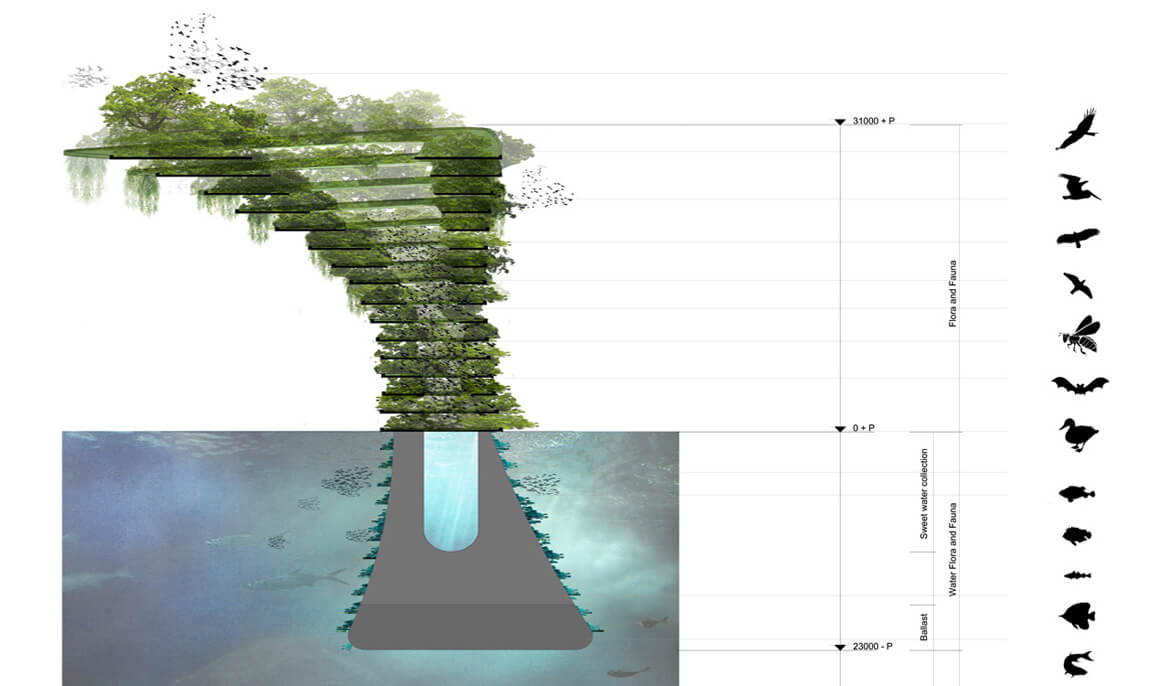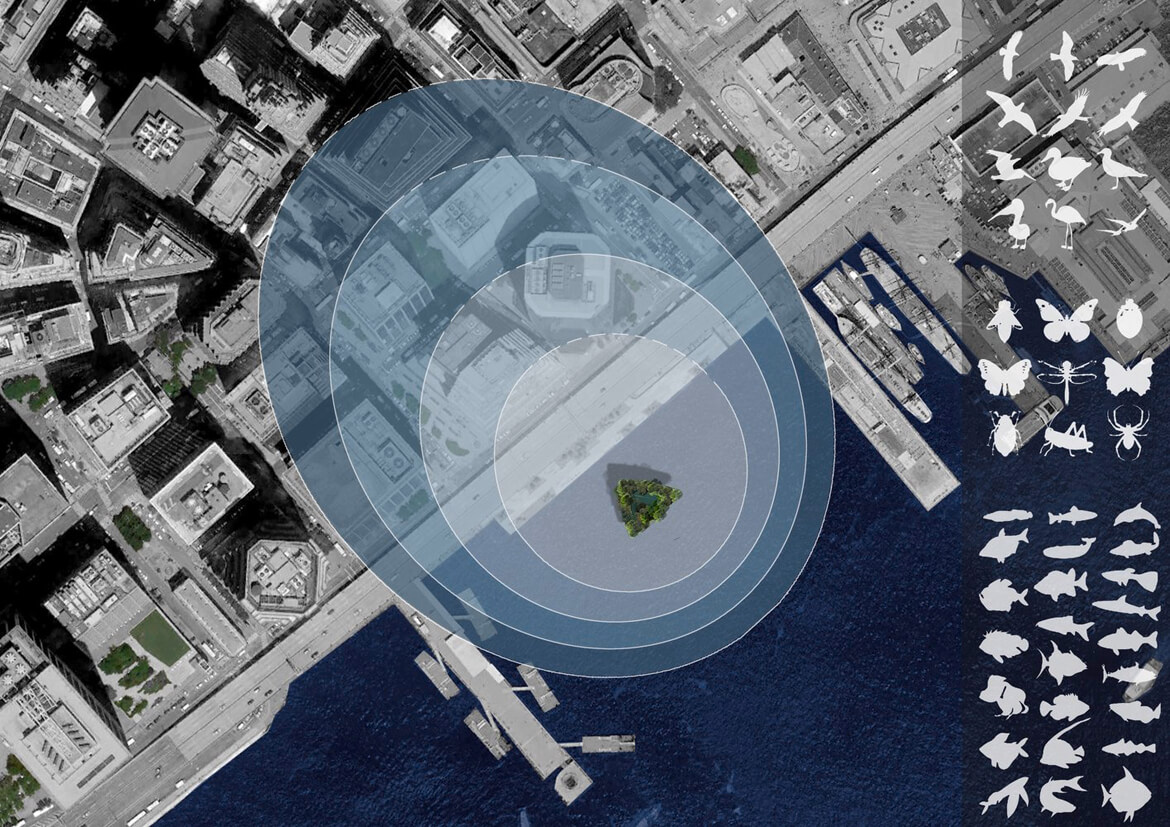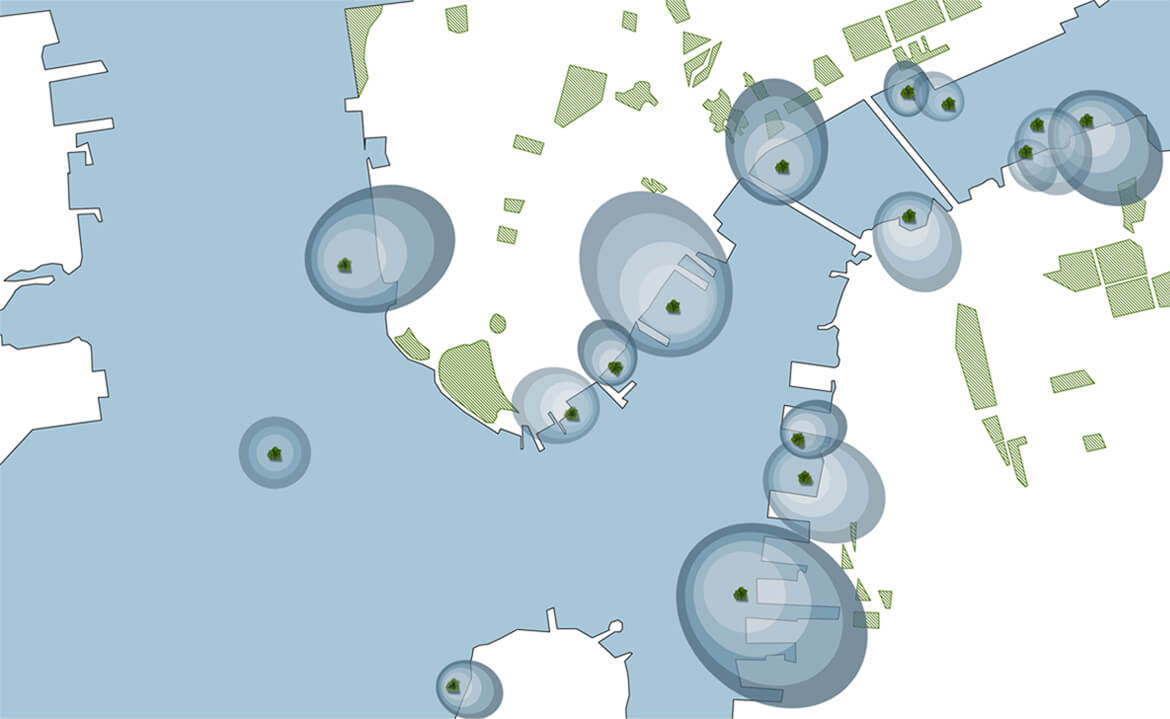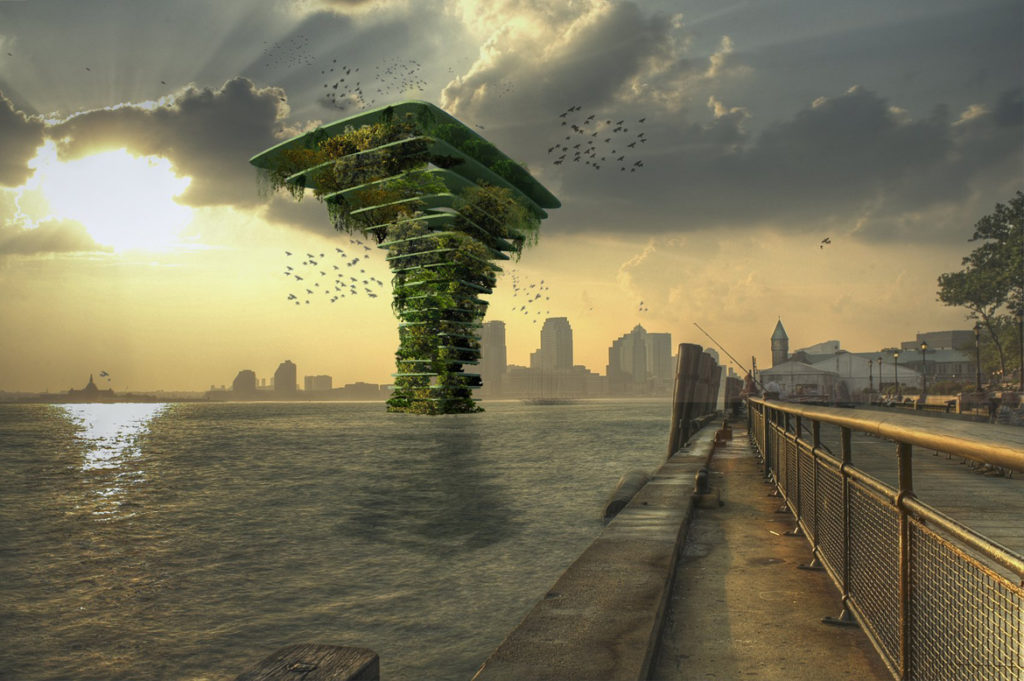
Clean Energy, Joachim Kern, Jan 2012
Das niederländische Architekturbüro Waterstudio.nl stellt den Sea Tree vor. Für Menschen gesperrt und in Ufernähe vor einer Großstadt verankert, stellt die Konstruktion ein schwimmendes Habitat für die Pflanzen- und Tierwelt dar. Die positiven Effekte dieses Biotops bereichern die Umwelt ebenso wie den innerstädtischen Ballungsraum.
Der Sea Tree stellt ein neues architektonisches Konzept dar, das darauf abzielt, neue Lebensräume für Tiere und Pflanzen in Großstädten zu schaffen. Das niederländische Architekturbüro Waterstudio.nl wendet sich dabei bewusst an jene Städte, welche an Flüssen, Seen oder Meeresküsten liegen. Warum? Bei einem Sea Tree handelt es sich um eine schwimmende Konstruktion, welche in Ufernähe fix am Grund eines Gewässers verankert ist.
Generell ist das Habitat in zwei Bereiche unterteilt, welche sich wiederum aus einzelnen Ebenen zusammensetzen. Jene Bereiche, welche sich unter Wasser befinden, bieten Zufluchtsorte für Fische, Wasserpflanzen und andere Meeresbewohner. Über Wasser können die Ebenen speziell an die lokal vorkommenden Tiere sowie an die ortsübliche Flora angepasst werden. Sie stellen somit automatisch neue Zufluchtsbereiche für kleinere Tiere wie etwa Vögel, Insekten oder Fledermäuse dar. Um die freie Entwicklung der Tier- und Pflanzenwelt nicht zu stören, ist die schwimmende Konstruktion für Menschen gesperrt.
Technisch betrachtet basiert der Sea Tree auf vorhandenen und sicheren Lösungen, wie sie seit Jahren in der Ölindustrie verwendet werden. Hinzu kommt, dass die neuartige Zufluchtsstätte für Flora und Fauna in ihrer Größe problemlos an die jeweils gegebenen Umstände angepasst werden kann. Die Entwickler geben die geschätzten Gesamtkosten für die Errichtung eines durchschnittlichen Sea Trees aktuell mit rund 3,5 Millionen Euro an.
Bei der Finanzierung des neuen Bauwerks beschreitet das Architekturbüro mit diesem Projekt einen gänzlich neuen Weg. So sollen große Ölkonzerne die Errichtung eines neuen Habitats finanzieren, während die jeweilige Stadt den entsprechenden Bereich für den Sea Tree zur Verfügung stellt. Beide Partner profitieren gleichermaßen von diesem Ansatz.
Während die Ölgesellschaft der Besitzer des Sea Trees bleibt und damit zugleich ihr umweltpolitisches Engagement zum Ausdruck bringt, wird die Stadtgemeinde selbst um einen wertvollen Naturraum bereichert. Gleichzeitig gehen keine wertvollen Baugründe an Land verloren. Die positiven Effekte des neuen Rückzugsgebiets für die Natur jedoch beeinflussen die Umgebung in einem Umkreis von mehreren Kilometer.
Die Realisierung des ersten Sea Trees ist, entgegen anderslautenden Meldungen, noch nicht fixiert. “Derzeit koordinieren wir einzelne Stadtverwaltungen mit unterschiedlichen Ölkonzernen”, so eine Architektin von Waterstudio.nl. Die finanziellen Aspekte des Projekts scheinen also derzeit noch nicht vollständig abgeklärt zu sein. Unabhängig davon gibt sich das Planungsstudio optimistisch und rechnet bereits in absehbarer Zukunft mit dem ersten Baubeginn. In welcher Stadt dieser jedoch erfolgen soll, ist derzeit noch unklar.
Waterstudio.nl ist ein, in den Niederlanden ansässiges, Architekturbüro, welches an architektonischen Lösungen für jene Situationen arbeitet, die sich automatisch aus der städtebaulichen Erschließung unserer Umwelt ergeben. Die Planer arbeiten daher verstärkt an der Entwicklung von Strategien, die sowohl flexible als auch nachhaltige Lösungswege darstellen.
Click here to read the article
Click here for the website

